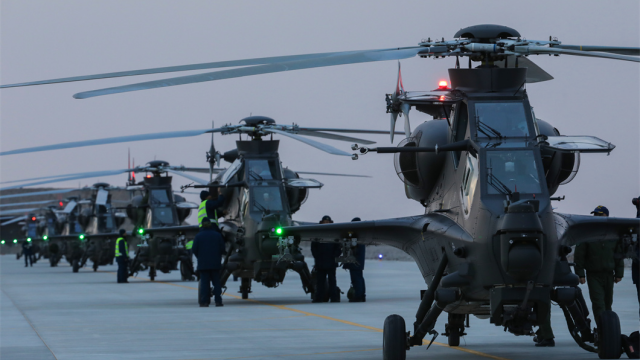By Li Chenyang and Zhang Tian
Myanmar’s military has taken over state power four times since the country’s independence, respectively in October 1958, March 1962, September 1988 and February 2021. There are both similarities and differences in the international and domestic background of the four takeovers.
Regarding similarities of international background, at all four times, the development of international relations is still in the stage of nation-states, when the Five Principles of Peaceful Co-existence remain the basic norms governing international relations. Domestically, Myanmar still hasn’t completed the building of a nation-state. Ethnic and religious conflicts are conspicuous at home, social and economic development level is on the lower end of developing countries, the middle class takes only a tiny part in social structure, the country features a low level of democracy in its politics, culture, and society, and there are no mature political parties and leaders.
Regarding the differences of international background, the world was in the middle of the Cold War when the first and second takeover happened, especially as the period around the 1960s witnessed the peak of military leaders controlling developing countries. But at that time, what the western bloc was most concerned about was whether these countries were pro or against communism; they didn’t care who was on the throne.
It was in the later stage of the Cold War when the Myanmar army took over state power for the third time in September 1988, right during the “third wave” of the democratic movement that swept across the world. From a regional perspective, during the first three takeovers, Myanmar barely had any interaction with the surrounding countries, nor did it join any regional organization, particularly when it was in a self-isolated state in 1988. But in 2021, Myanmar has not only joined the ASEAN and played an increasingly important role in it, but also forged a close relationship with Southeast Asian countries like Thailand and Indonesia.
As far as the country is concerned, it was burdened by economic difficulties, political division, social unrest and ethnic confrontation during the previous takeovers. Still, the takeover in February 2021 took place when the country was in a much better economic, political and social situation despite the challenging combat against the COVID-19.
In terms of objective, when the Myanmar army took over state power in October 1958, it was to “maintain stability” as the U Nu-led ruling party was in a standoff with the opposition party that prevented the government from regular operation. When it took over state power for the second time in March 1962, it was to “save the country” from splitting since ethnic minority groups were trying to secede from the republic union. The third takeover in September 1988 was to “stop riot” when protests and demonstrations had been going on for half a year and paralyzed the country. Now the fourth takeover in February 2021 was to make sure the “disciplined democracy” stipulated in the country’s 2008 Constitution will continue to be implemented.
In terms of intention, in October 1958, it was U Nu, the elected prime minister, who offered to hand over the state power to the military led by General Ne Win. When the Myanmar army took over state power in March 1962, it discussed with leaders of various political parties the possibility of co-governance, but no agreement was reached. After it retook power in September 1988, the military kept its promise of holding the general election in 1990, but then denied the election result and kept power in its own hand due to divergences on power-sharing and interests of the armed forces. The key reason for the abrupt power seizure in February 2021 was that the Myanmar military and the National League for Democracy failed to reach a consensus on sharing the state power under the framework of the 2008 Constitution.
With regard to the nature of the takeovers, the takeover in October 1958 was generally considered procedurally legal in accordance with Article 94 of the 1947 Constitution. After the military took power in March 1962 and September 1988 respectively, it abolished the Constitution adopted in 1947 and 1974 and used force, therefore those two takeovers were generally considered a “coup”. As to the takeover in February 2021, the Myanmar military claimed that it took action following Articles 417 and 418 of the 2008 Constitution. Although there are arguments over applying the articles and procedures, the military didn’t abolish the Constitution and has promised to hold a new election after a year-long emergency state, so the nature of the action this time cannot be determined yet.
Concerning the approach, the takeover in October 1958 was a peaceful transfer, but the takeover in March 1962 and September 1988 was by force. In February 2021, the military also used force to seize power but didn’t abolish the Constitution. Like in October 1958, the State Administration Council, the top power organ established by the military this time, also included a percentage of civilian officials, especially the union ministers and provincial governors appointed by the Council, whereas the top power organ formed in March 1962 and September 1988 didn’t include any civilian official. Besides, many a social elite in Myanmar agreed to the appointment made by the State Administration Council, indicating the existence of a social foundation for the power seizure this time.
It’s been only a little over two months since the Myanmar military took over state power on February 1, 2021, however, its effects are hard to evaluate at the moment.
Editor’s note: The author Li Chenyang is a senior researcher at the Center for China’s Neighbor Diplomacy and Institute of Myanmar Studies, Yunnan University and a research fellow of the Charhar Institute. This article is originally published on charhar.org.cn, and is translated from Chinese into English and edited by the China Military Online. The information, ideas or opinions appearing in this article do not necessarily reflect the views of eng.chinamil.com.cn.









